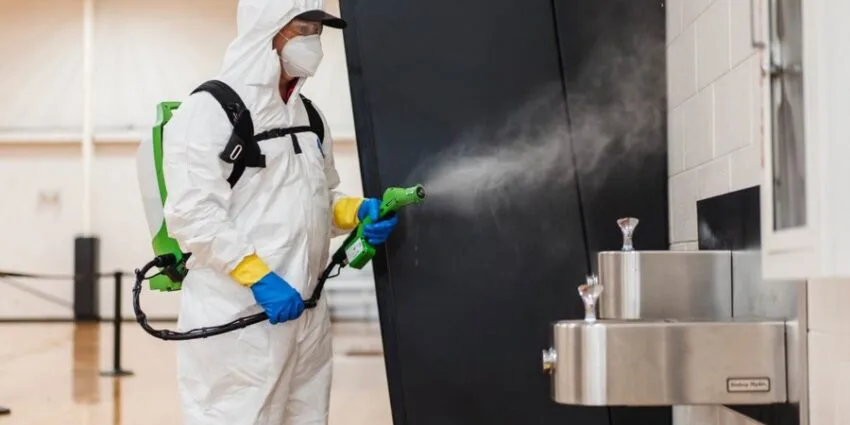Maintaining good health relies on keeping our surroundings clean and hygienic. To prevent the transmission of diseases and viruses in your space, it’s crucial to understand the specific techniques and routines necessary for effective cleaning. The concept of cleaning may vary among individuals, particularly if the exact meanings of terms related to cleanliness are unclear. Many terms are commonly used interchangeably, often without awareness. This article aims to clarify the fundamental distinctions between cleaning, sanitizing, and disinfecting. Continue reading to learn in detail.
Cleaning
It is the essential first step in the battle against germs. During cleaning, you remove dirt, dust, and visible debris from surfaces with the help of soap or detergent and water to physically wipe away visible contaminants. The process doesn’t necessarily eliminate all germs, but significantly reduces their numbers, making the surface look cleaner. Cleaning is essential for both aesthetic reasons and to create a foundation for effective disinfection and sanitization.
Sanitizing
Once you’ve cleaned a surface, the next step is sanitizing. It kills up to 99.9% of bacteria and viruses, ensuring the surface meets safety standards. It’s a preventive measure, minimizing the risk of infections. An alcohol-based sanitizer or other chemical agents are used during the process. Sanitizing is often applied in settings where a certain level of cleanliness is required, such as in food preparation areas and childcare settings to prevent the spread of illnesses and ensure a safe environment.
Disinfecting
Disinfecting goes beyond sanitizing; it annihilates 100% of microorganisms on a surface. It incorporates the use of chemical disinfectants, bleaches, wipes, or sprays that specifically target and destroy harmful microbes. It is crucial in places where germs can easily spread, like kitchens and bathrooms, and frequently touched areas such as doorknobs, switches, and countertops.
Key Differences
- Effectiveness: Cleaning reduces visible contaminants; sanitizing eliminates up to 99.9% of germs; disinfecting wipes out 100%.
- Process: Cleaning is about removing debris; sanitizing and disinfecting involve applying specific agents to kill germs.
- Time: Sanitizing works in about 30 seconds; disinfecting may take 5-10 minutes or more.
Understanding these nuances empowers you to create a living or working space that’s not just visibly clean but also safe from harmful microorganisms.
Why Choose Judux?
Now that you’ve grasped the distinctions among the three tasks, it’s evident that cleaning is a relatively straightforward activity, requiring only soap, water, and a cloth. On the other hand, sanitizing and disinfecting pose more challenges. Disinfection, in particular, involves handling potentially hazardous chemicals, necessitating careful usage. This is where Judux steps in. Our proficient team utilizes cutting-edge technology to ensure that your surroundings are not just clean but also thoroughly sanitized and disinfected, sparing you the effort. If you seek high-quality disinfection and sanitization services in Dubai for your residence or workplace, reach out to us now! In addition, we also offer deep cleaning and HVAC duct cleaning services at the most competitive price.
